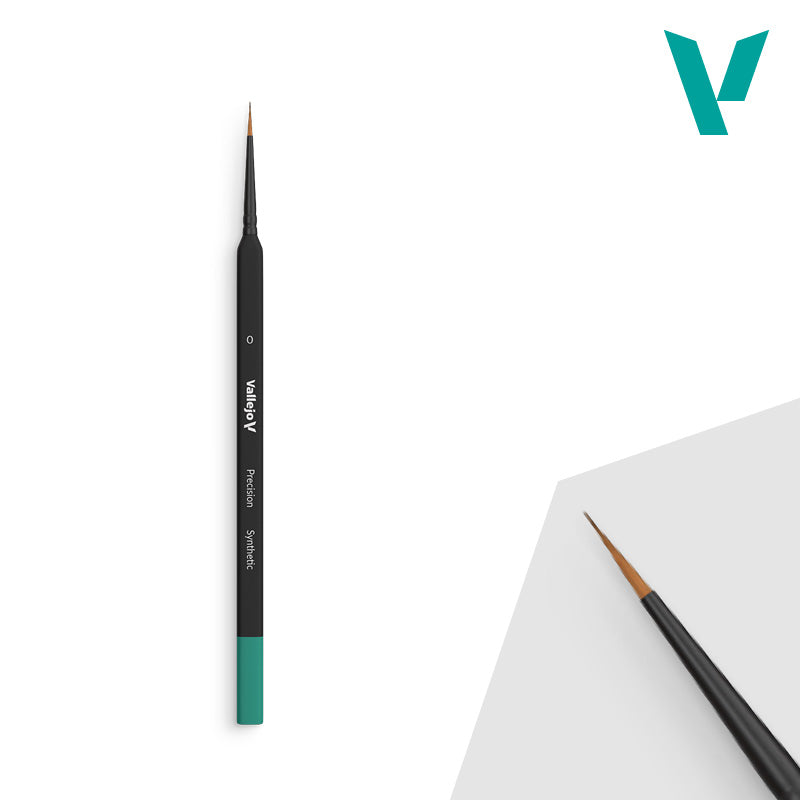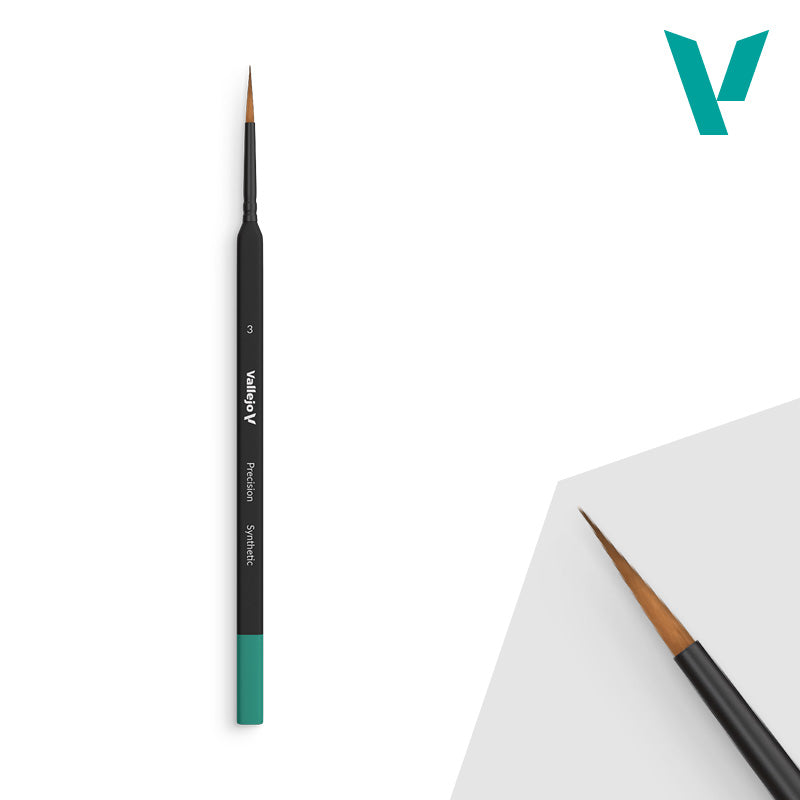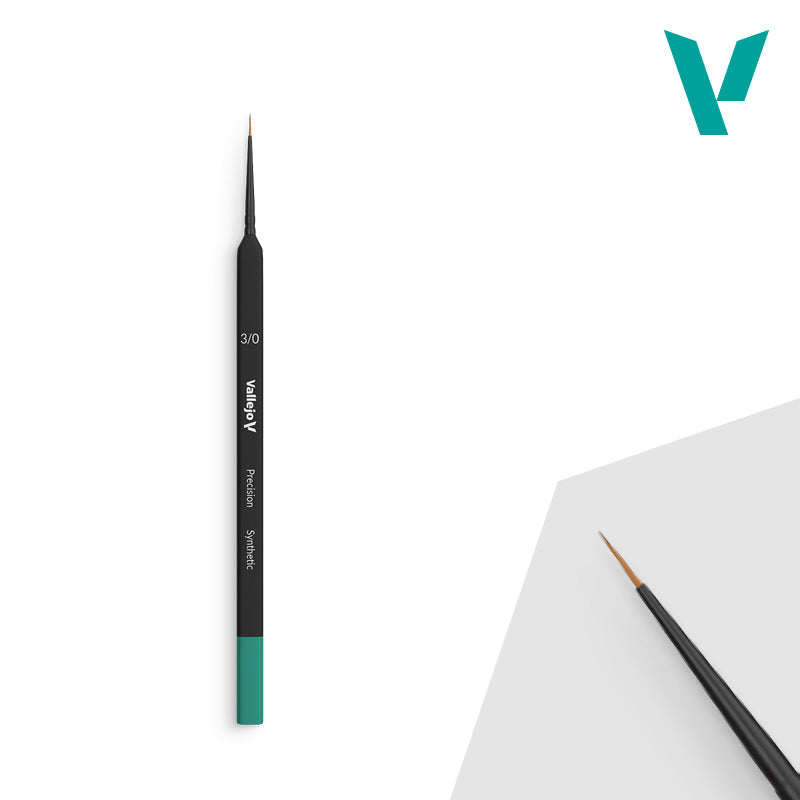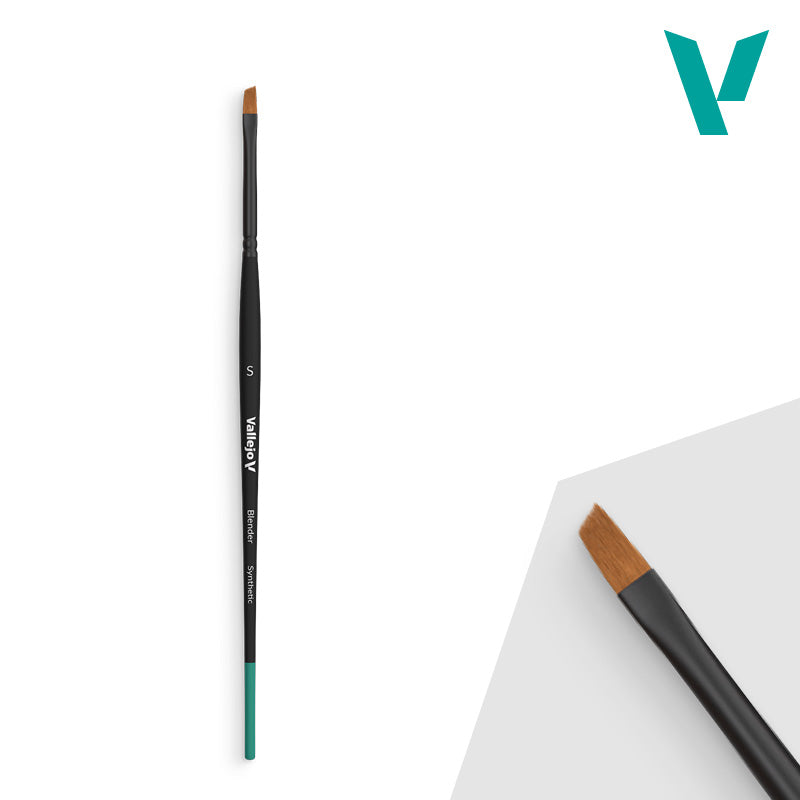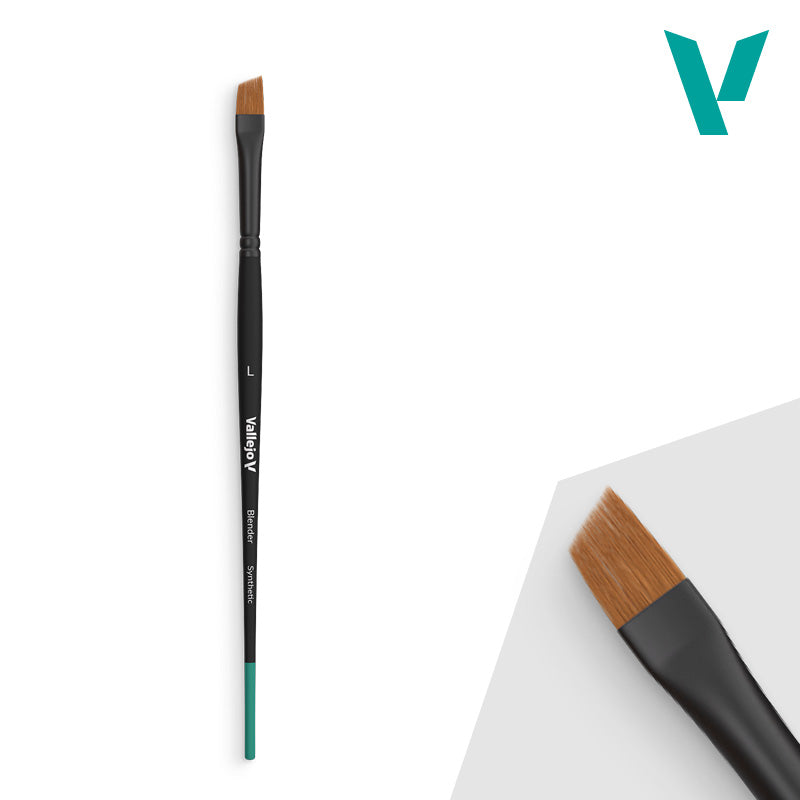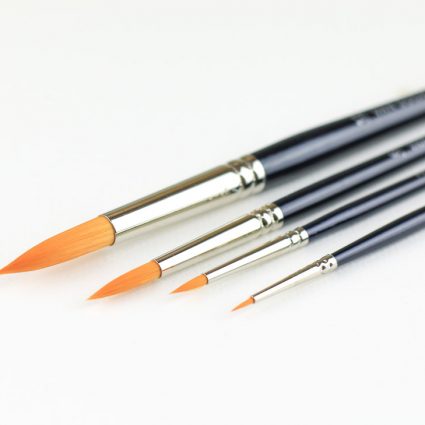

A Guide to Paintbrush Sizes
Artists’ brushes are usually given numbered sizes, although there is no exact standard for their physical dimensions. The number on the side of the brush refers to the thickness, length, or width of the brush hair. Rather than accurately representing these measurements, the numbering system is meant to order the size of the brushes. The width is measured just above the ferrule as can be seen in the diagram above.
Depending on the manufacturer sizing follows the following numbering conventions, from smallest to largest, the sizes are:
20/0, 12/0, 10/0, 7/0, 6/0, 5/0, 4/0 (also written 0000), 000, 00, 0, 1, 2, 3, 4, 5, 6, 7, 8, 9, 10, 11, 12, 13, 14, 16, 18, 20, 22, 24, 25, 26, 28, 30.
Brushes as small as 30/0 are manufactured by some companies but are not a common size. Sizes 000 to 20 are most common.
Decorators’ brush sizes are given in millimetres or inches, which refers to the width of the bristles. Common sizes are:
10 mm, 20 mm, 40 mm, 50 mm, 60 mm, 70 mm, 80 mm, 90 mm, 100 mm.
1⁄8 in,1⁄4 in, 3⁄8 in, 1⁄2in, 5⁄8 in, 3⁄4 in, 7⁄8 in, 1 in, 11⁄4 in, 11⁄2 in, 2 in, 21⁄2 in, 3 in, 31⁄2 in, 4 in.
Information taken from the excellent blog article by Daniel Brady
































